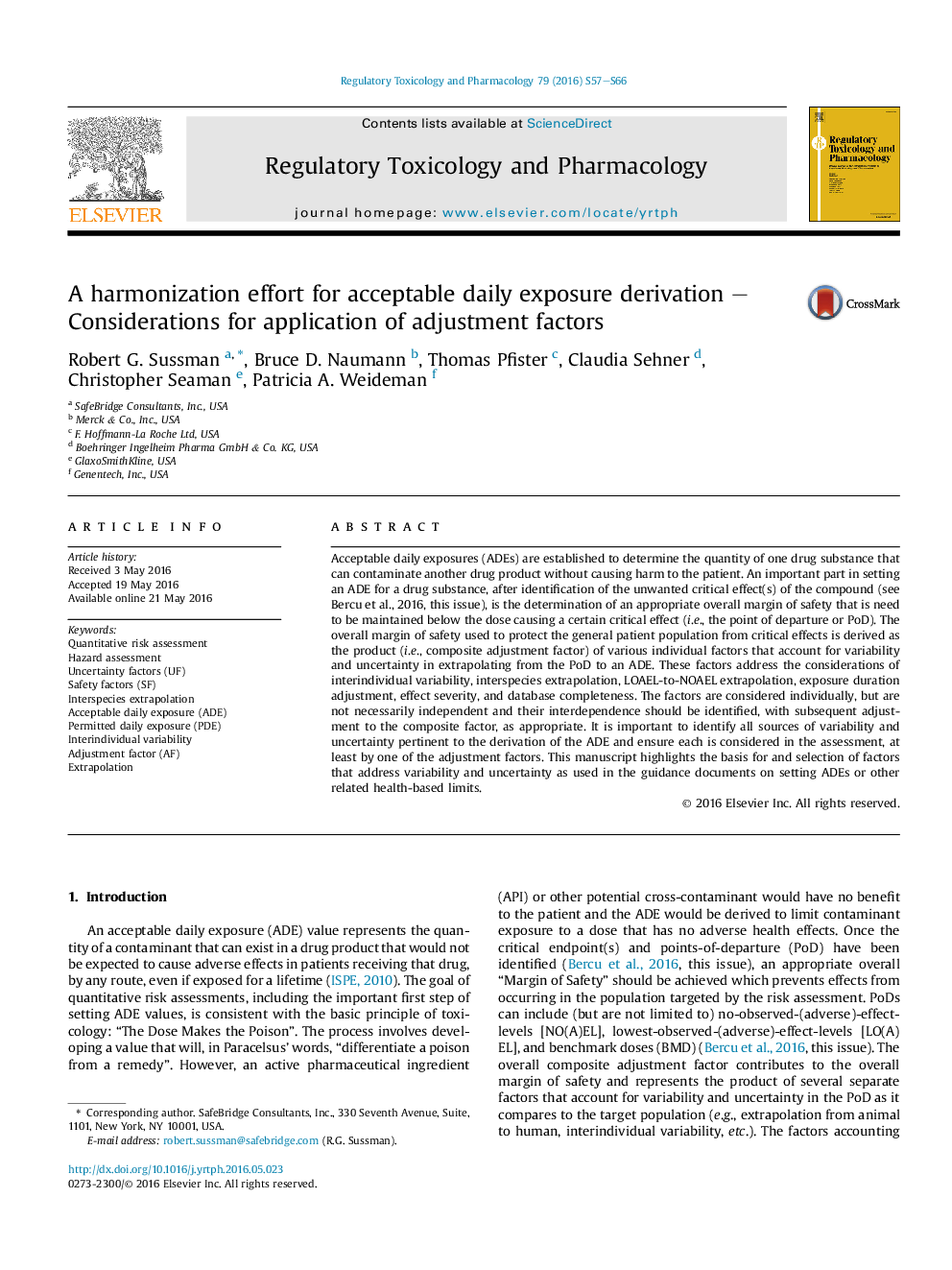| کد مقاله | کد نشریه | سال انتشار | مقاله انگلیسی | نسخه تمام متن |
|---|---|---|---|---|
| 2592281 | 1131964 | 2016 | 10 صفحه PDF | دانلود رایگان |

• Sources of variability in quantitative risk assessment include various parameters for adjustment, uncertainty and extrapolation.
• For each AF, judgment from a qualified toxicologist is needed to move from defaults which can be inconsistent across agencies.
• The lack of consistent methodologies in AF application may be the main driver for variability across derived ADEs.
• Each AF should be considered individually, but the interdependence in these factors should be identified and adjusted, as appropriate.
Acceptable daily exposures (ADEs) are established to determine the quantity of one drug substance that can contaminate another drug product without causing harm to the patient. An important part in setting an ADE for a drug substance, after identification of the unwanted critical effect(s) of the compound (see Bercu et al., 2016, this issue), is the determination of an appropriate overall margin of safety that is need to be maintained below the dose causing a certain critical effect (i.e., the point of departure or PoD). The overall margin of safety used to protect the general patient population from critical effects is derived as the product (i.e., composite adjustment factor) of various individual factors that account for variability and uncertainty in extrapolating from the PoD to an ADE. These factors address the considerations of interindividual variability, interspecies extrapolation, LOAEL-to-NOAEL extrapolation, exposure duration adjustment, effect severity, and database completeness. The factors are considered individually, but are not necessarily independent and their interdependence should be identified, with subsequent adjustment to the composite factor, as appropriate. It is important to identify all sources of variability and uncertainty pertinent to the derivation of the ADE and ensure each is considered in the assessment, at least by one of the adjustment factors. This manuscript highlights the basis for and selection of factors that address variability and uncertainty as used in the guidance documents on setting ADEs or other related health-based limits.
Journal: Regulatory Toxicology and Pharmacology - Volume 79, Supplement 1, 15 August 2016, Pages S57–S66